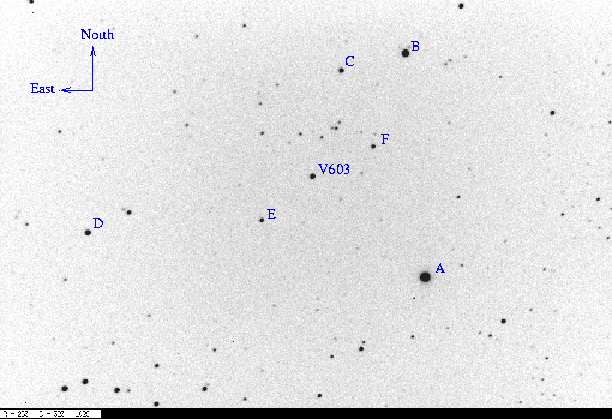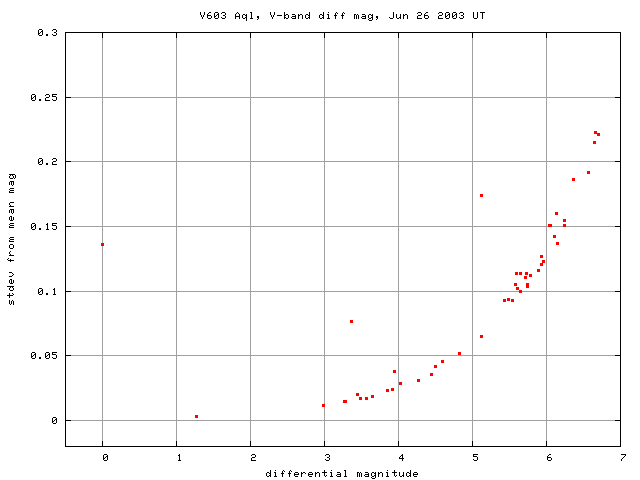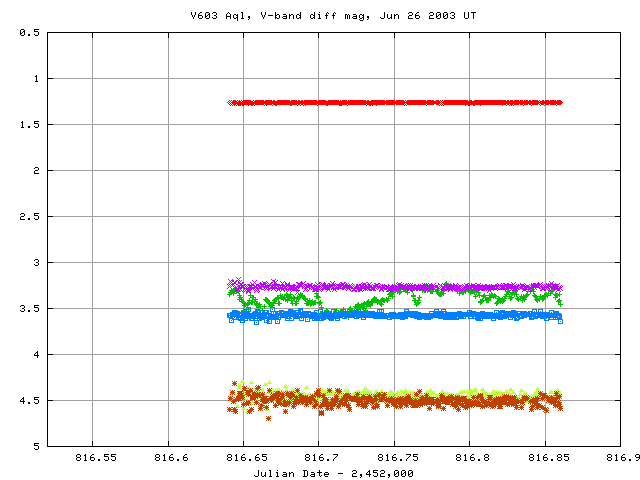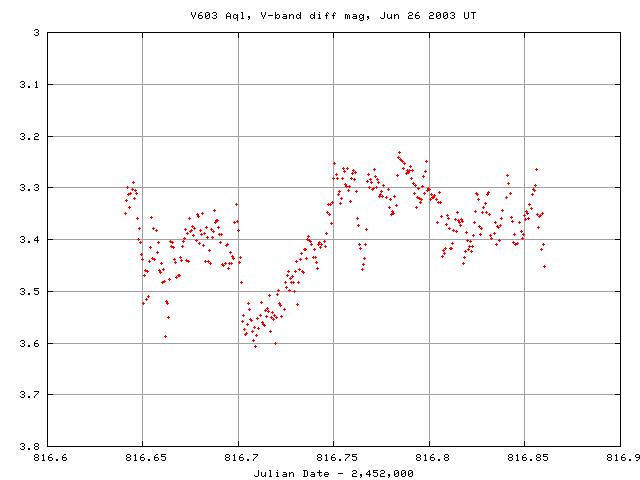
On Jun 25, 2003, EST, I decided to put the 12-inch Meade LX-200 into some serious use: photometry of the variable star V603 Aql.
The plan:
What I discovered:
Here's a chart of the field of V603 Aql, taken with our equipment: the field is about 20 arcminutes wide.
Note that
I discarded some 10-second and 20-second images taken early in the evening and kept only the 30-second data. I measured the instrumental magnitude of each star with aperture photometry, using a radius of 5 pixels = 11.5 arcseconds, and sky defined by an annulus around each star. Following the procedures outlined by Kent Honeycutt's article on inhomogeneous ensemble photometry, I used all stars available in each image to define a reference frame, and measured each star against this frame.
Below is a graph of the scatter in differential magnitude versus magnitude. Note that star "A" is saturated. I did not include it in the solution as a reference.

The outlier at differential mag = 3.3 is V603 Aql. The other prominent outlier is a star with a nearby companion which was sometimes mixed into its aperture.
It is clear that most of the stars in the field are not varying appreciably, but V603 Aql is, as the green light curve shows. The other data belong to stars B, C, D, E and F.

Here's a closeup of the variation in V603 Aql itself:

I've made a table of the measurements themselves, with three different flavors of time. Here's the start of the table:
# Measurements of V603 Aql made at RIT Observatory, Jun_ 26, 2003 UT, # taken by Michael Richmond. # All data taken with 12-inch Meade LX-200 + V filter + SBIG ST-8 CCD # Each exposure 30 seconds long; the tabulated times are midexposure # and accurate only to +/- 1 second. # 'mag' is the difference between V603 Aql and BD+00 4022 = GSC 00448.00731 # # UT day JD-2,450,000 HJD-2,450,000 mag Jun_26.14100 2816.64100 2816.64632 3.350 Jun_26.14154 2816.64154 2816.64686 3.324 Jun_26.14208 2816.64208 2816.64740 3.300 Jun_26.14263 2816.64263 2816.64795 3.314
After I had acquired the field of V603 Aql and found a good guide star (hint: place star "A" at pixel [356,226] on the main CCD), there wasn't a lot to do. About every 20 minutes, I had to move the dome to follow the telescope, but that was it. In the breaks, I worked on our 16-inch telescope. We placed it on a new Astrophysics German equatorial mount last fall, but hadn't used it much before the cold weather set it. I used both the "2-star" and "star drift" methods to improve the polar alignment of this telescope. However, since I was using an eyepiece without a reticle, it's likely that some additional work needs to be done.
I also believe that the mirror in the 16-inch can flop out of place if one points down low enough ... I should watch out not to do that next time.
Last modified 6/26/2003 by MWR.